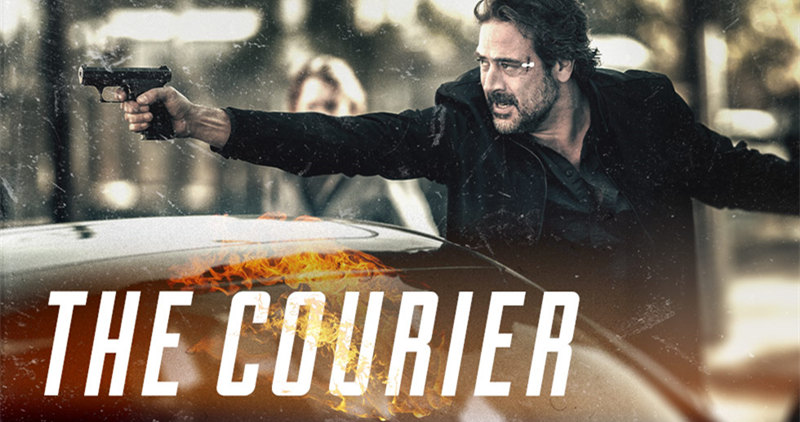Here’s a film only a dedicated splatter fan could like.
It’s really awful, but in fairness “The Driller Killer” from 1979 has a couple of things going for it. It was the first major theatrical release (discounting some early, short experimental films and a porn flick) from writer-director Abel Ferrara, who went on to make such notable movies as “King of New York” (1990), “Bad Lieutenant” (1992), and “Body Snatchers” (1993). So, there’s a historical angle involved. Also, the movie represents an attempt by the filmmaker to do something more than just splash the screen with blood. It’s an honest, if misguided, endeavor to provide some motivation for the killer and maybe even suggest an alienation theme as well.
That said, let me repeat: It’s a really awful film. But because it is of some historic value and because it has acquired a sort of minor-league, underground cult status, the movie is issued in a deluxe two-disc edition that includes its first uncut, widescreen presentation on video, as well as a roster of bonus items. That’s more than “Blade Runner,” “Batman,” or “The Ten Commandments” got when they premiered on disc.
For years I’ve heard this film being compared to “Taxi Driver” (1976) in its depiction of big-city corruption, the isolation of the individual, and the madness to which a person may be driven. One can certainly see the connections, and I have no doubt that Ferrara was influenced by Scorsese’s work of several years earlier. But even to suggest such a comparison is giving “The Driller Killer” much too much credit. Scorsese’s film looked at New York City and modern urban society in a wholly original, ironic, entertaining, and thought-provoking way; Ferrara’s film looks at New York City as a means to an end; namely, to gross out an audience. Ferrara has said he was surprised when the movie was picked up by a distributor and actually shown in mainstream movie houses.
As this was a low-budget film and cutting corners was essential, Ferrara himself stars (credited as Jimmy Laine) as a most disagreeable fellow named Reno, an artist living with a bisexual girlfriend and his girlfriend’s girlfriend. It’s an intriguing arrangement. They live together in a dumpy little New York apartment overlooking a street full of bums, vagrants, and winos. The premise of the story was suggested to Ferrara as a “what if.” While Ferrara was living with some roommates in just such an apartment a few years before, one of them mentioned “What if a vigilante came out of the night and put these poor souls out of their misery?” Ferrara took the idea and ran with it, making Reno just such a vigilante.
Reno is behind on his apartment rent, quarreling with his girlfriend, who is about to leave him, up against a painter’s block in the latest canvas he’s doing, and generally feeling bummed out. When a punk rock band moves in nearby and begins annoying him until all hours, he cracks. He sees a commercial for a Porta-Pack on TV, a device for making electrical appliances cordless. He buys a cordless drill and goes berserk with it, starting on a killing spree that begins with the derelicts on the streets below him.
There is little tension in the film and even less suspense. It takes the first half of the movie’s ninety-six minutes before Reno finally snaps. The rest is all talk, and given that there’s nothing worth listening to and that nobody in the film makes any attempt at anything even approaching acting, you can imagine the results. The performances are awkward and leaden, with the exception of Reno’s snarls, which seem to come directly from the real Ferrara. No one ever breaks a smile, this film is so solemn, and the tone is so murky it gets depressing in a hurry. I’m not sure, but I suspect that a viewer might also begin wielding a power drill if he or she had to sit through it too many times.
The editing is clumsy, scenes either stretching too far or ending too abruptly. The story, simple in structure, takes much too long to unfold. The punk band is obnoxious, which is probably a compliment. A nude shower scene featuring the two women is thrown in for no particular reason except to show two beautiful bodies undraped. It may remind viewers of Brian De Palma’s shower scenes, but with De Palma there was always some purpose beyond titillation. The lighting, which is meant to be dark, is almost always too dark. The setting, mainly the cramped apartment, which is intended to be claustrophobic and a part of the reason Reno goes nuts, sets the viewer’s nerves on edge as well. And the ultimate scenes of horror are not half so horrible as one might expect, just grisly.
The one thing I did like about the film was the ending. I won’t give it away, but it makes perfect sense in the context of everything that goes before it. Are the final few minutes enough to justify wasting one’s time on the rest of the movie? Not on your life. But, then, yours is not my life.
Video:
As we might expect from a super low-budget project, the video quality is not exactly thrilling. What we have is a first-time widescreen appearance of the film on video in a ratio that hovers around 1.69:1, non-anamorphic, across my 36″ standard-screen, Sony XBR television. At least I assume it’s non-anamorphic because of its rather coarse appearance and because the studio, Cult Epics, doesn’t mention that it’s enhanced for 16×9 TVs.
The picture is often blurry, muddy, and fuzzy compared to the best DVD has to offer, but at least it has the distinction of not being too grainy. I assume Cult Epics did their best to preserve the image from the original film stock, and the transfer is undoubtedly better than the first editions of the movie on DVD and VHS. But, honestly, the result is still no better than a very average TV broadcast. The fact that the film itself is quite dark, physically as well as in tone and atmosphere, doesn’t help matters much. Anyway, you’re going to see almost everything that was projected onto a theater screen in 1979; whether that’s good or bad is up for grabs. Indeed, for a lot of fans, the film’s ragged aspect may be a part of its charm.
Audio:
My DVD player’s readout said the audio was in Dolby Digital 2.0 stereo. You could have fooled me. It sounds like ordinary mono. Oh, well. When the movie begins, a large announcement tells the viewer that “This film should be played loud.” I don’t know why. The DVD’s soundtrack is already about ten decibels higher than normal, so, if anything, a viewer should turn it down. I mean, how loud do you need the volume to enjoy punk rock? For me, very low, indeed. And how loud do you need the volume to hear the sounds of a power drill ripping through flesh and bone?
The bottom line here is that like the movie and like the video, the audio isn’t all that good. It’s flat, constricted, tubby, crackly, and generally annoying. The film’s fans will love it.
Extras:
Appropriate to a film classic on the order of “Citizen Kane,” the movie gets a full, two-disc treatment. The first disc contains the widescreen presentation of the feature film, the 2.0 stereo soundtrack, English as the only spoken language, and French and Spanish subtitles. In addition, and for me more important, there is a full-feature audio commentary by director Ferrara. He sounds exactly like his character in the movie, so I wonder how much acting he was really doing. He is quite snarly, very cynical, very casual, and very frank. He was more fun to listen to than the movie was to watch. Disc one also includes a repetition of the Porta-Pack commercial seen in the movie, a director filmography, twelve scene selections, and a pan-and-scan theatrical trailer.
Disc two is devoted to Ferrara’s early short films. The first two are “Could This Be Love,” thirty minutes long, and “The Hold Up,” fourteen minutes. Both are available with optional director commentary. The third item is called “Nicky’s Film,” not that it has any real title, but that’s what Ferrara calls it. It is six minutes long, silent, and without commentary. Finally, there is an X-rated trailer for Ferrara’s first theatrical release, a porno film. I suppose this trailer was included because the porno film is a part of Ferrara’s filmography, and Ferrara fans will want everything they can get from the man; and for its purely prurient content. The trailer is quite graphically raunchy, but it is a kick to see that the film it’s promoting appears to be a porno product with an actual plot. No, the porno film itself is not included on the disc. Sorry.
The extras conclude with a booklet insert containing notes on Ferrara’s movies by Brad Stevens, author of “Abel Ferrara: The Moral Vision”; plus a list of the movie’s chapters.
Parting Shots:
I suspect there are three types of viewers who might wind up seeing this film. The first is the devoted Abel Ferrara disciple who must own everything the director has ever done. The second is the cult-movie enthusiast who has heard about the film but perhaps never seen it, at least not uncut and in widescreen. The third is the guy hunting through his local video store for the only gory film, the only “video nasty,” he hasn’t rented yet, who might come across this title and think it another “Texas Chainsaw Massacre.”
The rest of us might want to pass.


